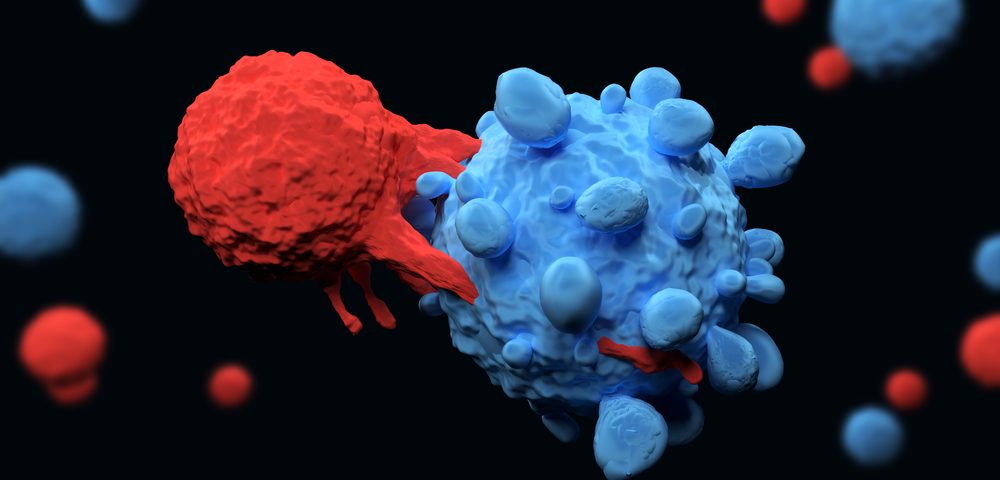Scientists at Johns Hopkins have created a digital map that addresses the variability of T-cell receptors, the chemical “antennas” that recognize antigens and trigger an immune response. While still under development, this digital “ImmunoMap” could one day be used to determine which cancer patients will respond successfully to immunotherapies.
By creating the ImmunoMap, researchers already have found that cancer patients with a more diverse range of T-cell receptors may respond better to immunotherapy treatments and vaccines.
“ImmunoMap gives scientists a picture of the wide diversity of the immune system’s responses to cellular antigens,” Jonathan Schneck, MD, PhD, a lead author of the study, professor of pathology, medicine, and oncology at the Johns Hopkins University School of Medicine, and a member of the Johns Hopkins Kimmel Cancer Center, said in a press release.
The study, “ImmunoMap: A Bioinformatics Tool for T-Cell Repertoire Analysis,” appeared in the journal Cancer Immunology Research.
The T-cells of our immune system feature receptors in their membrane that recognize foreign molecules called antigens. When a certain antigen is detected by the corresponding receptor, a counterattack is triggered to eliminate the threat.
Cancer cells also express antigens and signal alerts to the immune system. But cancer cells have developed strategies to evade detection by T-cells, allowing tumors to grow unchecked. The goal of several cancer immunotherapies is to overcome this and destroy cancer cells while leaving healthy cells intact, via a response by the immune system.
While “much of immunotherapy today is built on the premise that we know these antigens, we actually don’t know as much as we need to about them and the T-cells that recognize them,” said John-William Sidhom, an MD and PhD student at Johns Hopkins and the study’s first author.
Sidhom created a mathematical model that works as a digital map of the genetic sequence of receptors from human T-cells that were exposed to a virus. This model became the ImmunoMap.
“Our goal was to cluster T-cell receptors that are similar and may target the same antigen,” Sidhom said.
With the help of high-powered computers, researchers mapped the collection of T-cell receptors and converted receptor similarities or differences into a numeric distance. In other words, if the sequences of two receptors were similar, the computer would assign them a short distance; if their sequences were different, the distance would be greater. Once all of the sequences were analyzed, the computer looked for patterns among the receptors.
“That’s how we got ImmunoMap, by characterizing receptor sequences as they relate to each other,” Schneck said. “T-cell receptors that are very similar, with slight differences in their sequences, may be recognizing the same antigen.”
To test ImmunoMap’s potential, researchers examined tumors in 34 patients with cancer being treated with Opdivo (nivolumab). Three patients with melanoma responded to the therapy. These patients had more T-cell receptor clusters — 15, on average — compared to the eight or nine clusters seen in non-responders.
But after four weeks of therapy, the diversity of T-cell receptors among responders decreased by 10 to 15 percent.
“Those patients had a broad array of receptor weaponry before their treatment, which may have allowed the right receptor to kill their cancer cells,” Schneck said. “Once their immune system found the correct receptor, T-cells expressing those receptors multiplied, leading to an overall reduction in the structural diversity of their T-cell receptors.”
Contrary to what some scientists believed, these results suggest that the ability of T-cells to penetrate a tumor is not the only factor determining patient responses to immunotherapy.
While “infiltration is important, it’s not enough to explain patients’ variable responses to immunotherapy drugs,” Schneck said.
While ImmunoMap already has shown promise, researchers say they need more data to accurately predict which patients will respond to immunotherapies.
“At this point, ImmunoMap can’t match T-cell receptors to specific antigens, or determine whether those antigens are important for immunotherapy response in any individual patient,” Schneck said.


